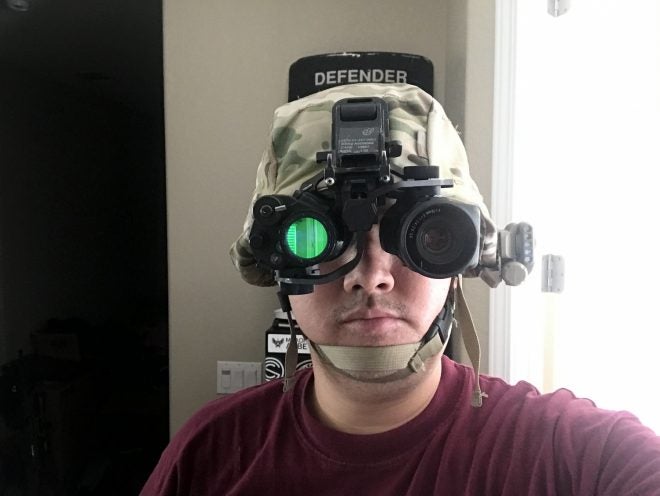For this week’s Friday Night Lights spotlight we will take a closer look at the SiOnyx Aurora. Last November I wrote an article about the validity of digital night vision technology. Click here to refresh your memory. I mentioned two strong candidates that can help one see in the dark without using a flashlight. Those examples were the Sony A7S and SiOnyx Aurora. After writing that article, some new test videos were posted online and the Aurora further piqued my interest. So I ordered the Aurora when it went on sale around Thanksgiving. You may be interested in what I discovered in my testing of the Aurora as a digital night vision camera and its potential to be used as a Night Optical/Observation Device (NOD).
It Can See In The Dark
Before I got the Aurora, there were only a handful of tests online that showed how the Aurora sees in the dark compared to traditional night vision. Those examples were sub-par. The tests did not seem to show traditional NODs in the best light. So I immediately went out and compared my PVS-14 against the Aurora. My initial test was successful. I took them out to an area near my neighborhood where there are very little lights due to the high wall and the tall trees on the left. It is rather dark there.

Close approximation of what the train tracks looked at night under full moon.
Seeing in the dark is nothing special. Digital cameras with high sensitivity or ISO, can see in the dark as well. Which makes the Sony A7S a candidate in my previous article. What sets the Aurora apart is the fact that it can see IR light without any modification.
See All The Light
One major characteristic of traditional NODs is its ability to see the infrared spectrum of light. There have been digital cameras that can also see infrared light. Certain models of Sony Cybershot cameras had “Night Shot” modes where the infrared blocking filter is physically shifted away from the sensor. Well the Aurora has this as well as high sensitivity to light. What does this mean? You can use the Aurora to see IR lasers and IR illuminators.
I went to an area near my house where there are two parcels of farm land separated by a road. It is exceptionally dark there. The buildings are 200-500 yards away depending which direction you are looking and there was a full moon out.
One commonality between the video above and the one before it is the full moon. The amount of ambient light really helps the SiOnyx Aurora shine. Here is a picture taken in Twilight mode of my house at 5:30 am. My neighborhood has very bright street lights.

The Aurora digital night vision camera has three modes to record Night Mode.
- Color Mode
- Green Glow
- Greyscale
Color mode and grey seem to be the two best out of the three. Green Glow is a simulation of the green phosphor look you get with traditional night vision but the image seems muddy in comparison to the other modes.
In lesser lighting conditions the Aurora does not do as well as analog night vision. Same location as the video above but only a crescent moon to provide ambient light. The level of noise increases in the Aurora but no real difference for traditional night vision.
If you recall my Civilian Owned Night Vision article, I mentioned that night vision can be used to help medical professionals to find veins. Well since the Aurora can see IR light, it too can see veins.
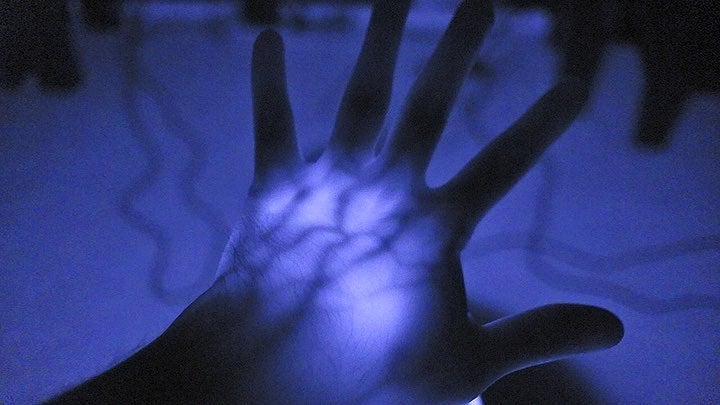
Trouble In The Dark
In extreme low light, the Aurora struggles to show the definition of objects whereas the PVS-14 can still see objects.
In one of the videos above, I mentioned how the SiOnyx Aurora seems to have a little bit of lag compared to my PVS14. The lag does not seem to be present in the actual video file since I was able to sync both videos and I did not see any lag there. So the lag is actually in the electronic viewfinder (EVF). In order to show people this lag, I had to use two iPhones and a camera rig/gun.
The lag and the low light issues are really the only negative aspects of the SiOnyx Aurora. While there isn’t anything one can do about the lag, you can augment the Aurora with some IR light. Especially indoors. Now there is an unexpected issue with the Aurora and that is when lights are turned on while in Night mode. The camera takes a moment to auto adjust the exposure to compensate for the bright light. Traditional night vision does not have this problem.
Here is a video where I show night sights vs an RMR. Night sights bloom so much that it over comes the red dot. Traditional NODs sort of have the same problem but due to the short depth of field, the blooming is greater on tritium but the red dot is crisp so it can shine through the blooming.
Here is another video where I shoot an AR-15 with a white light WML. Notice how you cannot see much outside the lit area? If you had done this with analog night vision, you would still be able to see the surrounding area.
Here is a test of my Surefire Hellfighter and the Aurora.
Can You Wear The SiOnyx Aurora On Your Face?
Well obviously you can because that is how I have been testing and filming most of the videos I shot. I just happened to have a PVS-14 bridge that my friend sold me a while ago. Fortunately for me the bridge positions the Aurora almost perfectly to be used on a helmet. The Aurora has a hole to mount it to tripods and it is the same thread pitch as the PVS-14.

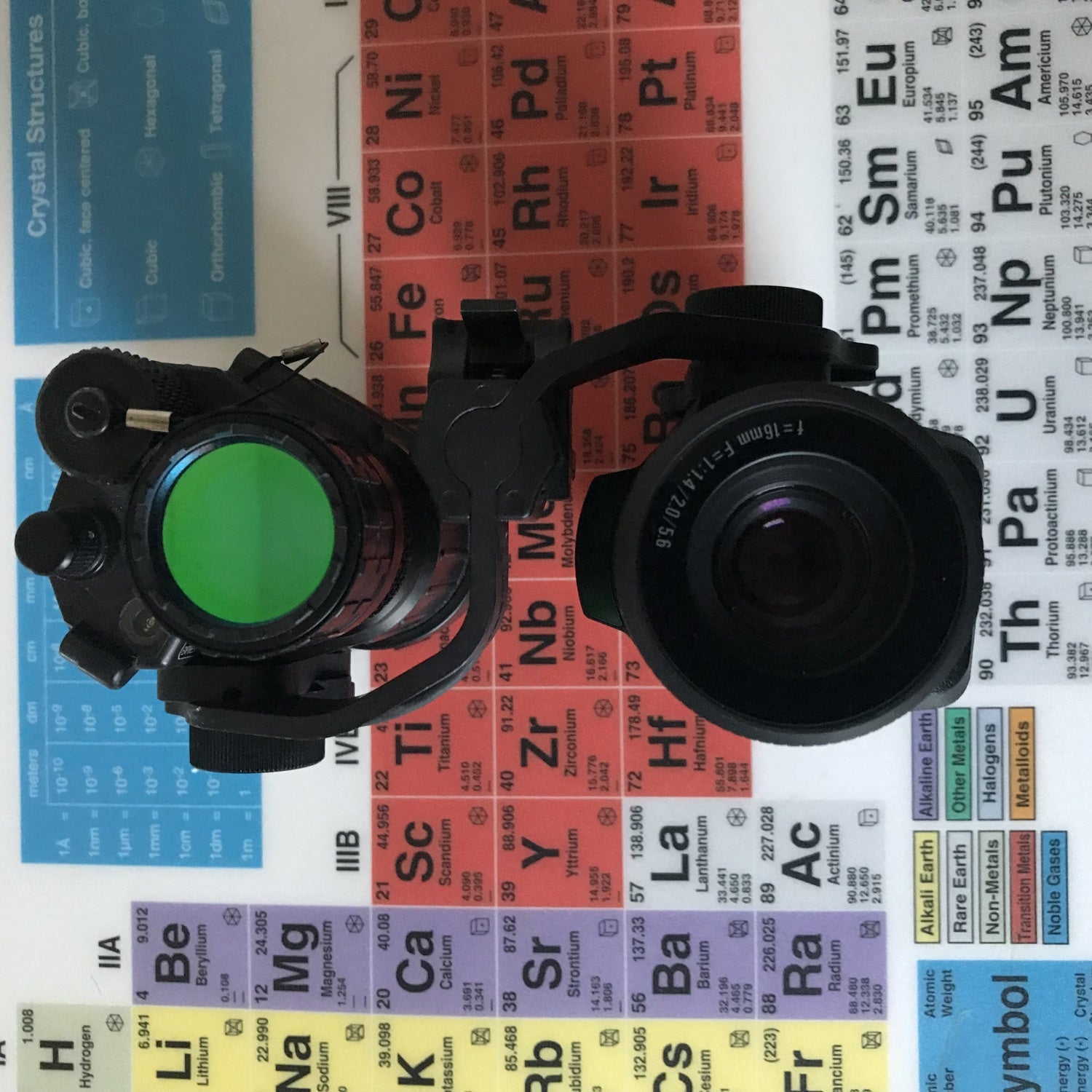

Unlike the PVS-14, the orientation of the Aurora is crucial. Many PVS-14 arms don’t care what angle the body of the PVS-14 is oriented. Rotating the Aurora at an odd angle will cause the video to be tilted. You can really only run the Aurora perfectly vertical or inverted if you don’t want your video to be canted.
There is a slight tilt in my setup and that is due to the anti-rotation lug for the PVS-14. Below you can see a triangular roof like protrusion. This mates with a corresponding negative cavity in a PVS-14 to prevent it from spinning around the screw. The Aurora does not have that cavity so it pushes the body upwards and causes a slight tilt in the camera. The tilting is minor though and not a major concern.


Can you run two Auroras? Yes, you can but you need a different mount. The PVS-14 bridge functioned as an expedient test rig but it is not designed for the Aurora. The Aurora body is too wide and hits the center of the bridge. This physically positions the Aurora further to the side. If you try to move the Aurora closer to the center, it is physically blocked by the center of the bridge. I ended up having to angle the Aurora to get the EVF in position properly so I could look through it.
I tried running the Aurora on a normal PVS-14 J-Arm and the position is so bad, I had to angle the Aurora at an extreme angle in order to look through it.
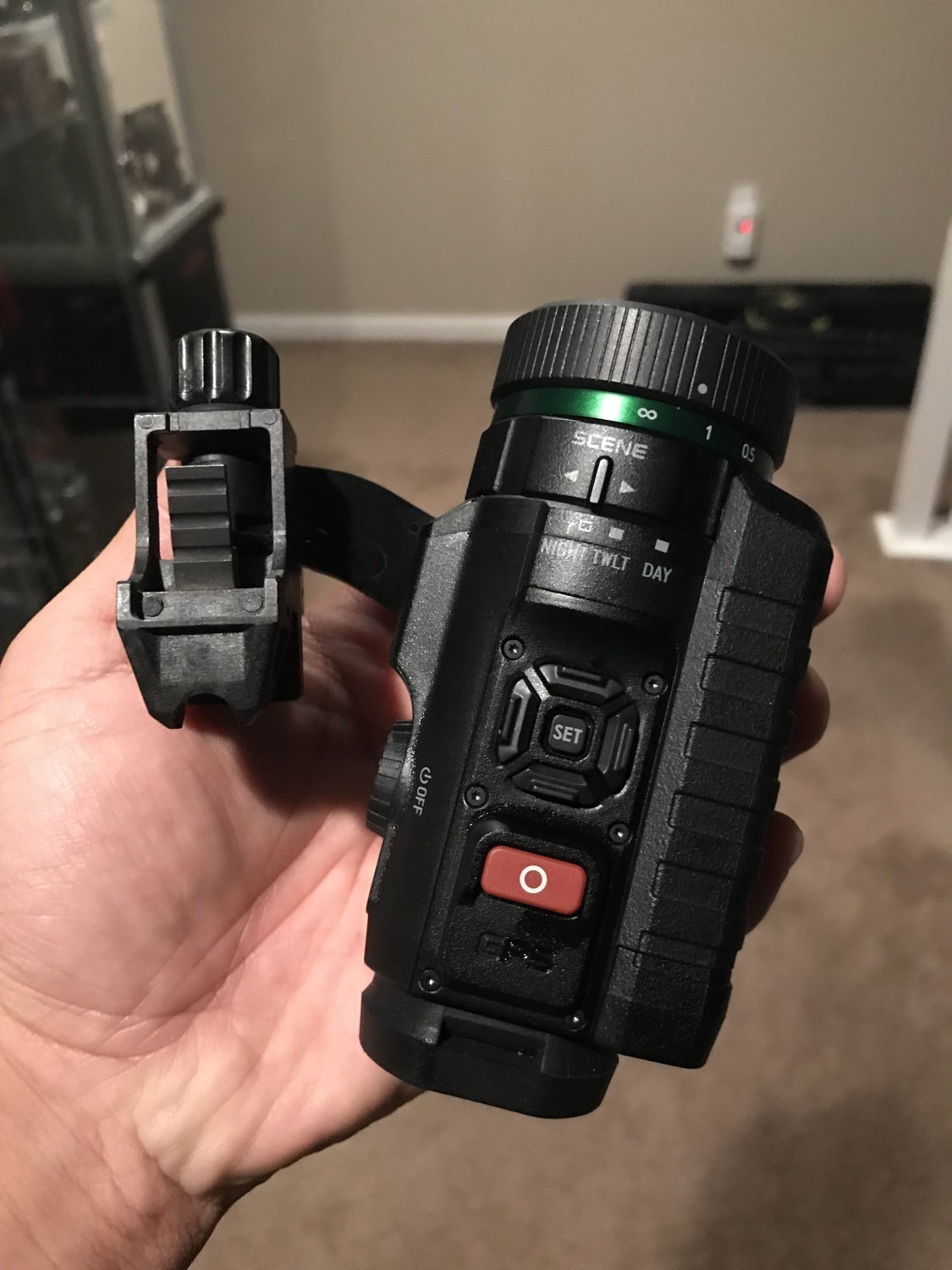
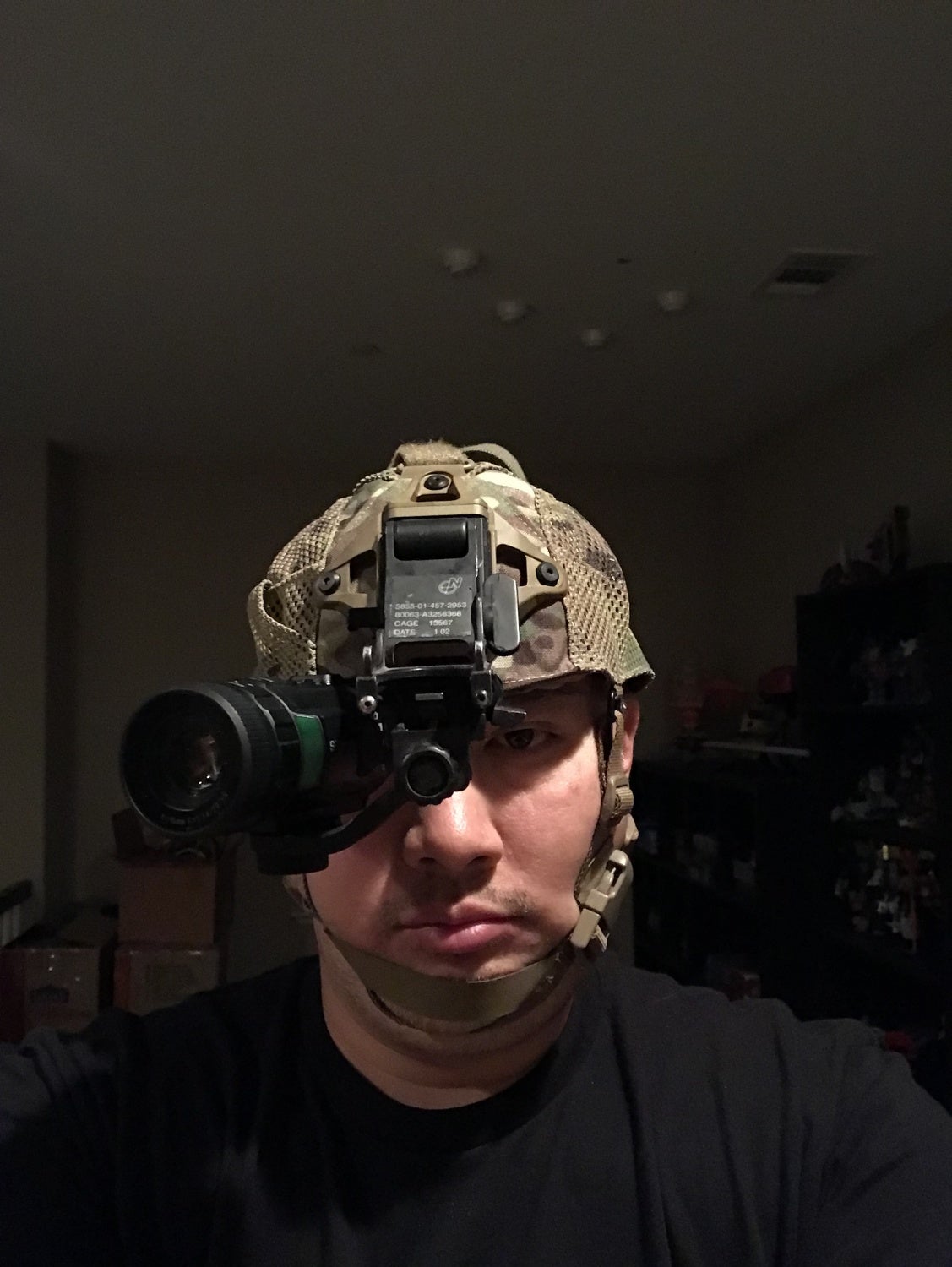
This is the ridiculous angle the Aurora has to be in order for me to look through it while using ths PVS-14 J-Arm.

Do not fear, I have a backup plan. I have a DSLR hot shoe accessory rail. This allows camera accessories like a flash and microphone to be attached to the hot shoe of your DSLR. I used two threaded adapters and borrowed a spare Aurora and ran them as dual night vision devices. The crucial aspect to running dual tube NODs or in this case dual Auroras is the interpupilary distance. That is the distance between your eyes from pupil to pupil. The eyepieces of dual tube nods and the ones on my PVS-7 can shift left and right since not everyone has the same distance between their eyes. The two EVFs need to be positioned correctly so they line up with your eyes. That way you can look through both cameras and your brain will co-align the two images into one image.

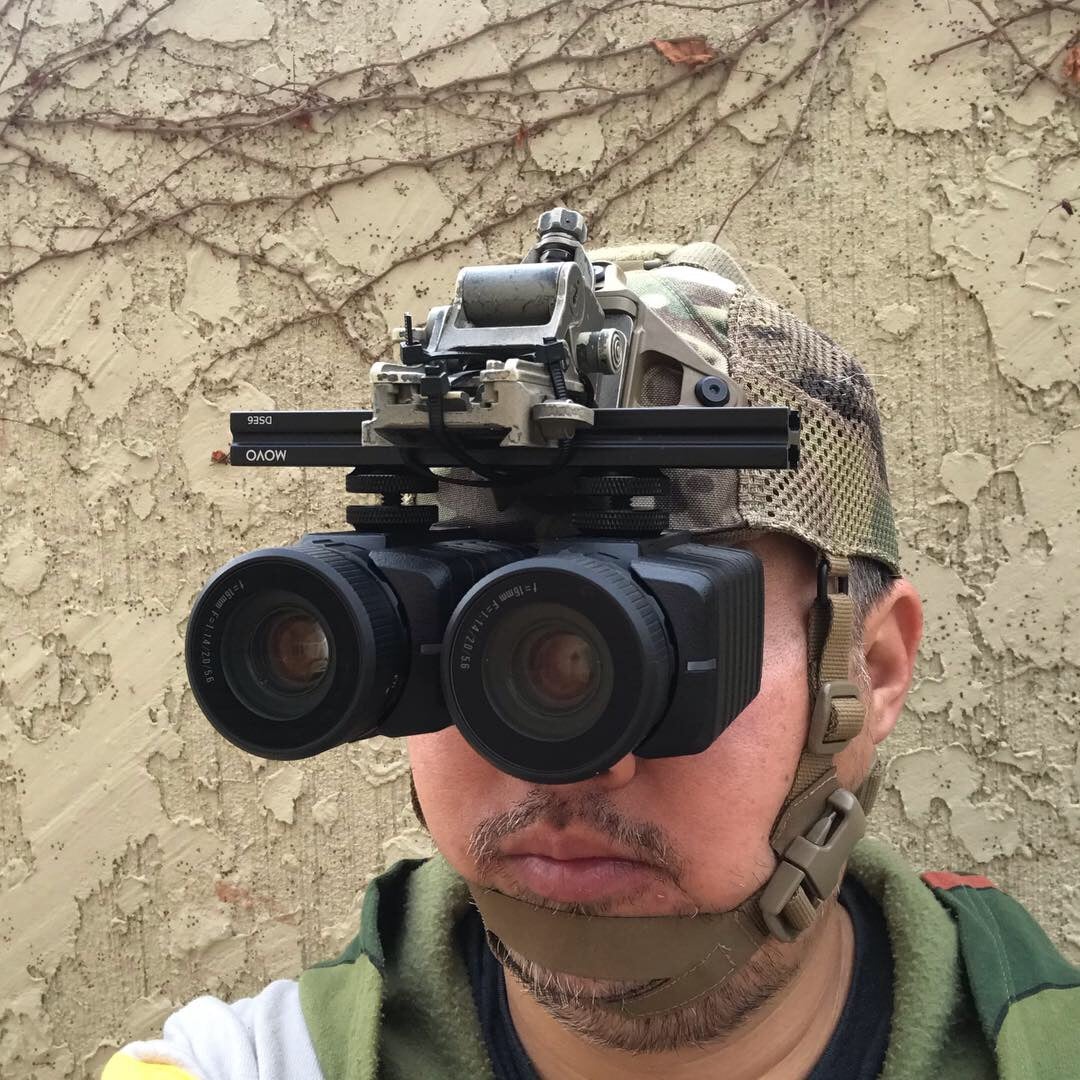
It works and not only can I see without getting headaches, but I can also film 3D stereoscopic video. You can try crossing your eyes or load the video up in your iPhone and watch it in one of those 3D virtual headsets.
SiOnyx is working with Wilcox on making a dedicated mount system to properly attach the Aurora to a helmet. They are modifying a dovetail to work with their MUM bridge. Wilcox is not cheap. The bridge alone costs $676 on TNVC.


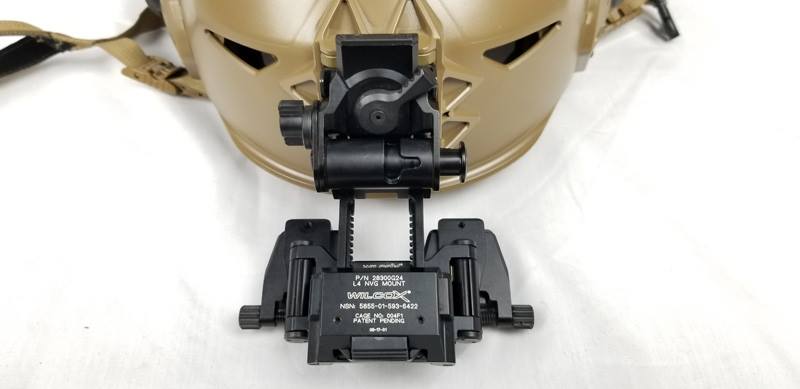

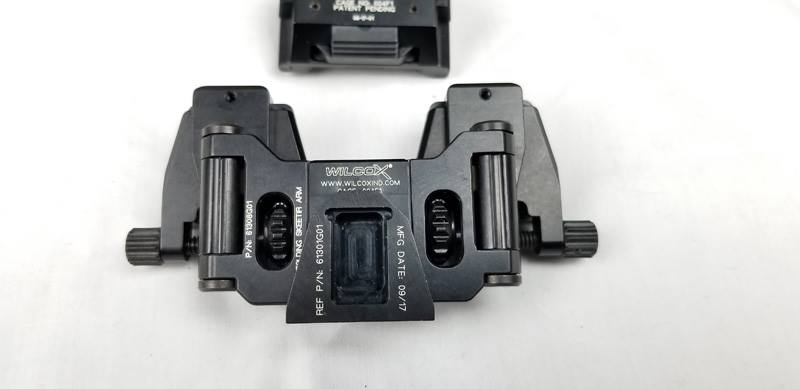

At the moment there is a third option. Lion’s on Facebook, has 3D printed a custom bridge to mount Auroras on your helmet.

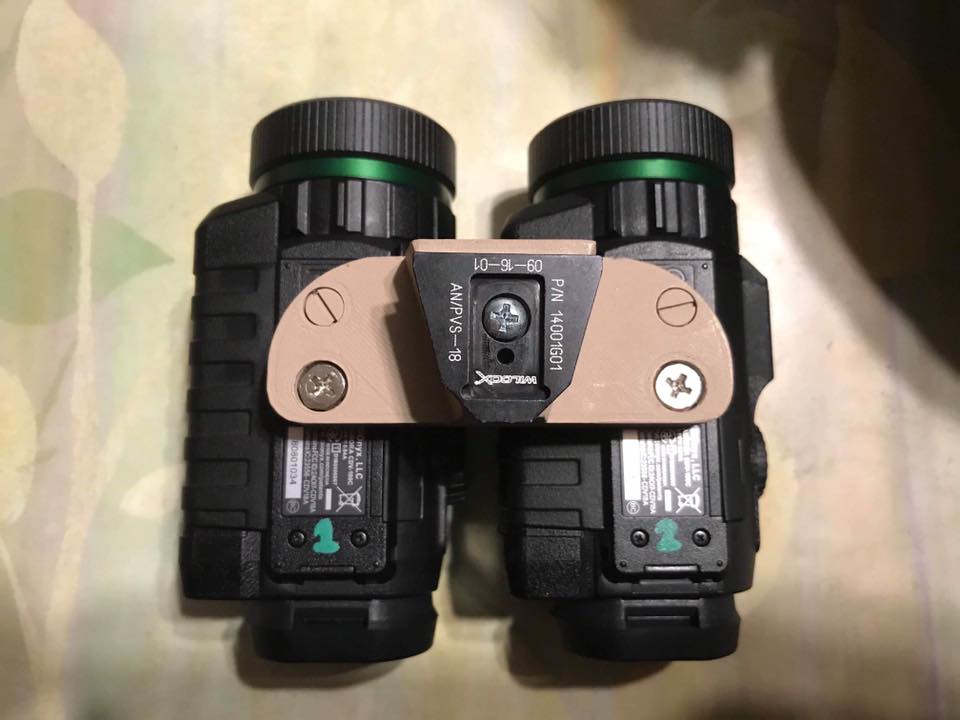
For more information on the Hyperion Mount, go here.
While you can wear the Aurora on your helmet in front of your face, the lag makes it a bit challenging. Yes, I was able to walk around and navigate in the dark but prolonged use made it uncomfortable. As I walk, my body and head naturally move. This moves the cameras and the EVF tries to catch up. So the image I see does not match what my ear and body are telling me. While it was not nauseating, it is not as smooth compared to looking and walking while wearing my PVS-14 or PVS-7 NODs.
How is the weight? Actually the Aurora is slightly lighter weight than my PVS-14.


Weapon Mounting The Aurora
SiOnyx did develop a weapon mount for their Aurora digital night vision camera. However just be cognizant of the fact that it was designed as a camera first and foremost and it can work with optics. The mount leaves a lot to be desired. While SiOnyx assured me it was designed and made by a US manufacturer, it looks like something made by UTG or some other cheap Chinese company.


I mounted the Aurora to my airsoft KRISS vector as a quick test to see how the Aurora would look behind my Eotech. The gun doesn’t matter since I was only concerned with how well would this work. Could you position the Aurora in front of the optic? Yes but it wont work that well. You would need a low magnification optic and you have to change the setting in the camera to leave the EVF constantly on. The bigger problem is parallax. Aiming through an optic at a screen will have major POA shifting problems.
Notice anything about the mount? It is extremely long and takes up way too much rail space. I could not mount it to an AR top rail. Unless the Eotech was sitting on the handguard.

The length is actually necessary. The EVF is held in place with a latch and that latch is at the bottom of the EVF. Through their own testing, SiOnyx discovered that recoil of an AR-15 in 5.56 could dislodge the latch and cause the EVF to detach. So the mount physically prevents the latch from opening. I still think they can get someone else to make a better looking and more practical mount design than the one they have now.
How much does it cost?
The Aurora is much cheaper than traditional night vision with Gen 3 tubes. MSRP of the Aurora is $799. When I got mine, it was on sale for $639. Last month they were on sale for $599.


Even at full MSRP, the Aurora is cheaper than my night vision devices. No, I am not selling them so don’t ask.
Improvements
Aside from a better weapon mount, the Aurora has a few things lacking. First of all a simple lens cover. The Aurora comes with a neck lanyard and a soft cloth bag to store the camera but I prefer a lens cap. I recycled a set of scope covers that just happened to fit the Aurora. My Nikon bikini scope caps worked. I just had to shorten the elastic bands.
I tried one of my Nikon flip scope caps and while it works, it doesn’t stay on that well. It is plastic on plastic so it slips off easy. Often I put the Aurora in a jacket pocket and the flip cap will slide off in my pocket.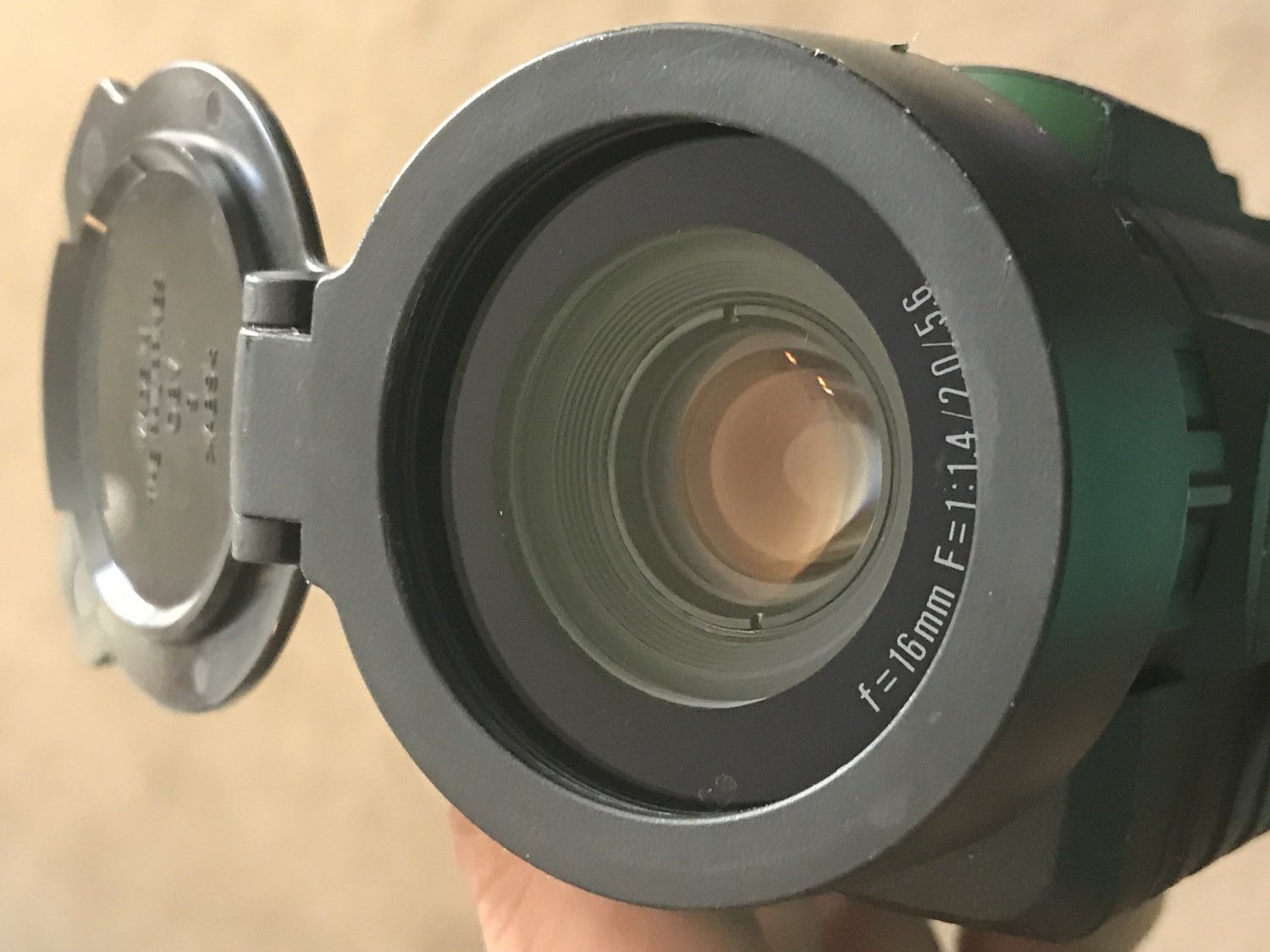
I would have preferred it if the Aurora was threaded for traditional camera filters. So you could use an ND filter as a sacrificial lens. But at the moment there is no way to protect the lens. I am having my friend Bryan S. laser cut some acrylic to fit between the lens and flip cover.
Another minor issue is the image quality. The Aurora only records as high as 1080×720 but it has a 1″ sensor. The camera in your smartphone may have higher resolution but the sensor is tiny. The size of the sensor has something to do with its sensitivity to light according to SiOnyx.
There is an app to pair the Aurora with your smartphone. That is how you can download the videos or photos from the camera to your phone. At the moment of this article, it is a two-step process. You need to download the video and then export it to your phone. This seems silly since the whole point of downloading it is to get the video onto my phone. Another internal camera issue is when you invert the image. There is a menu in the camera that allows you to “invert the image” however this only inverts the onscreen information like time, compass, GPS and other onscreen information in the EVF. It does not actually invert the video you record. Which means you have to rotate the image in post-production.
The battery life is not great. It is 2 hours of continuous use. But you can plug in an external USB battery pack. Make sure the camera battery is fully charged and the camera is on in the mode you want, like still or video mode. Then plug in the backup battery. You can buy more batteries since it uses a Fuji NP-50 style lithium battery and you can buy those online for rather cheap and some come with a battery charger.
Is The Aurora Worthwhile?
I think it is. While it is not a replacement for traditional analog night vision like my PVS-14 or PVS-7B, it does a decent job given the right lighting conditions. The price is decent especially when they are on sale. Even at $799 MSRP, it is cheaper than analog Gen 3 Night Vision. The Aurora can see in the dark and see infrared light. Add on top of that the fact it is a digital camera. You could get a POV camera system for your PVS-14 or other analog night vision devices but they cost a lot for a low-quality camera lens. See my article about budget POV cameras. While wearing the Aurora you can record point of view type videos. I actually prefer using the Aurora to my DIY iPhone camera mount just for the ease of use and it films in color.
Here is a recent test I did showing the difference between civilian IR illuminators of a DBAL A3 and my MAWL-C1+.
It is perfect for shooting video at night and taking photos in low light. While it was never intended to be a helmet worn night vision device, it can function as one in a limited capacity. Ambient light will determine the quality of the image and the lag in the EVF will take some getting used to if you plan on navigating in the dark with just the Aurora.
Since the Aurora is a digital camera by nature, there is no image intensifying tube. So it is not prone to burning out by powerful lasers or bright lights. You could point it at the sun and nothing bad will happen. Try doing that with Gen 3 night vision without a day filter cap and you just turned it into an expensive fancy paperweight.
Here is a recent video shot at a night match. There was a half moon out so there is a little bit of noise in the Aurora footage. Whereas the video filmed using the white phosphor PVS-14 is crisp. Unfortunately, I was attending a media event and could not attend the match (so I lent the camera to my friend). They did not check the focus. But the important part of this video is that it clearly sees color. This is one of the downsides to analog night vision. It is monochrome. In the video below you can see my friend shooting the stage. He has a green glow stick while the RO happened to have a red glow stick. This is important information that you can not normally get with monochrome night vision.
There is another thing that the Aurora does better than traditional night vision and that is the fact that the Aurora is not regulated by ITAR restrictions. It falls under EAR99 commerce control. So exporting them is much easier. This also means you could fly out of the country and bring your Aurora camera along on your vacation. You cannot legally export gen 3 night vision without the proper export license and you are not supposed to fly out of the country with your NODs even for a vacation.
The Aurora works great as a digital night vision camera and is a pretty capable piece of equipment that doesn’t break the bank. As long as you manage your expectations, you will be satisfied with it.
 Your Privacy Choices
Your Privacy Choices
